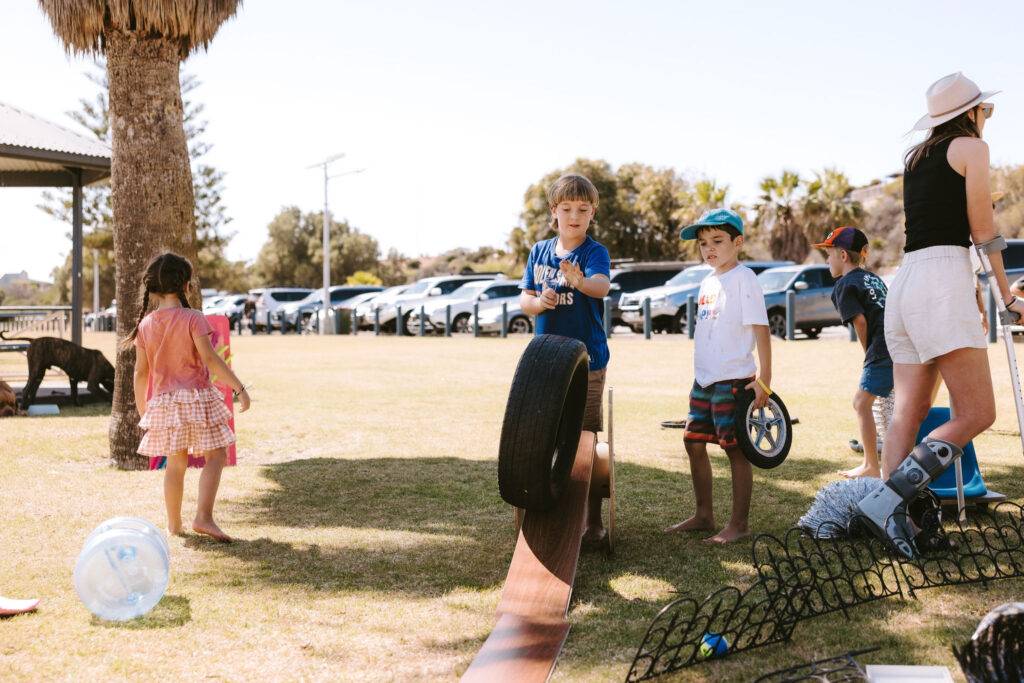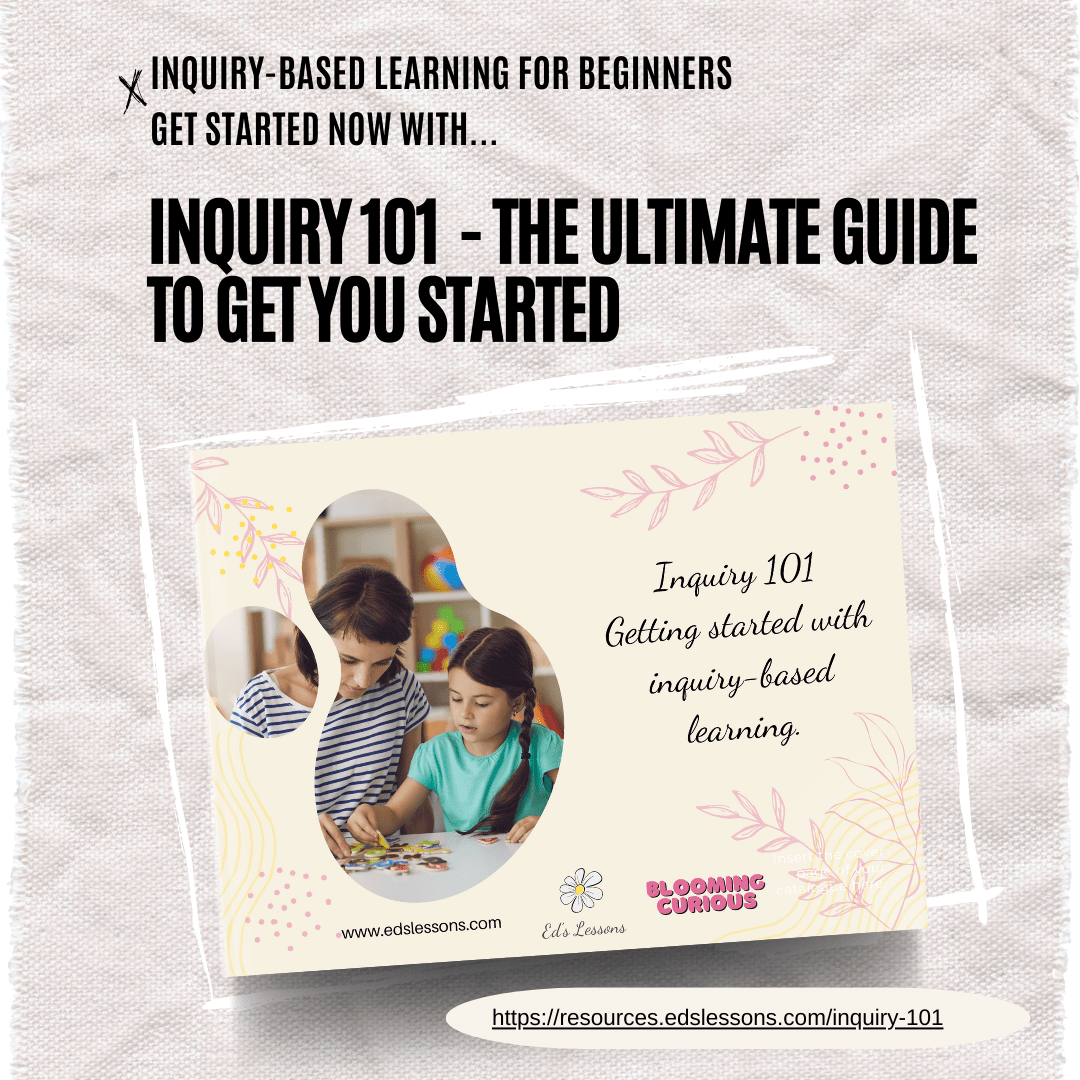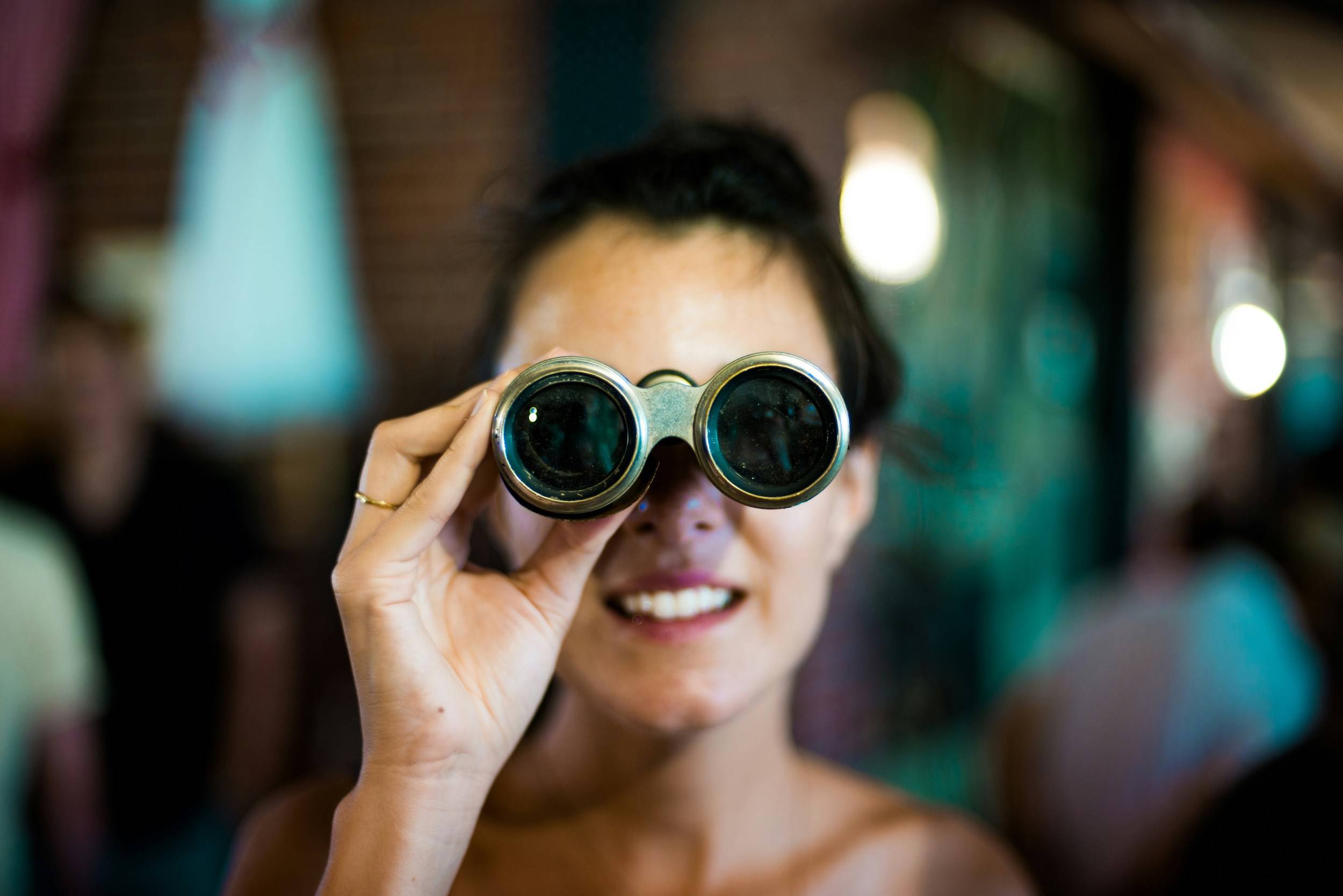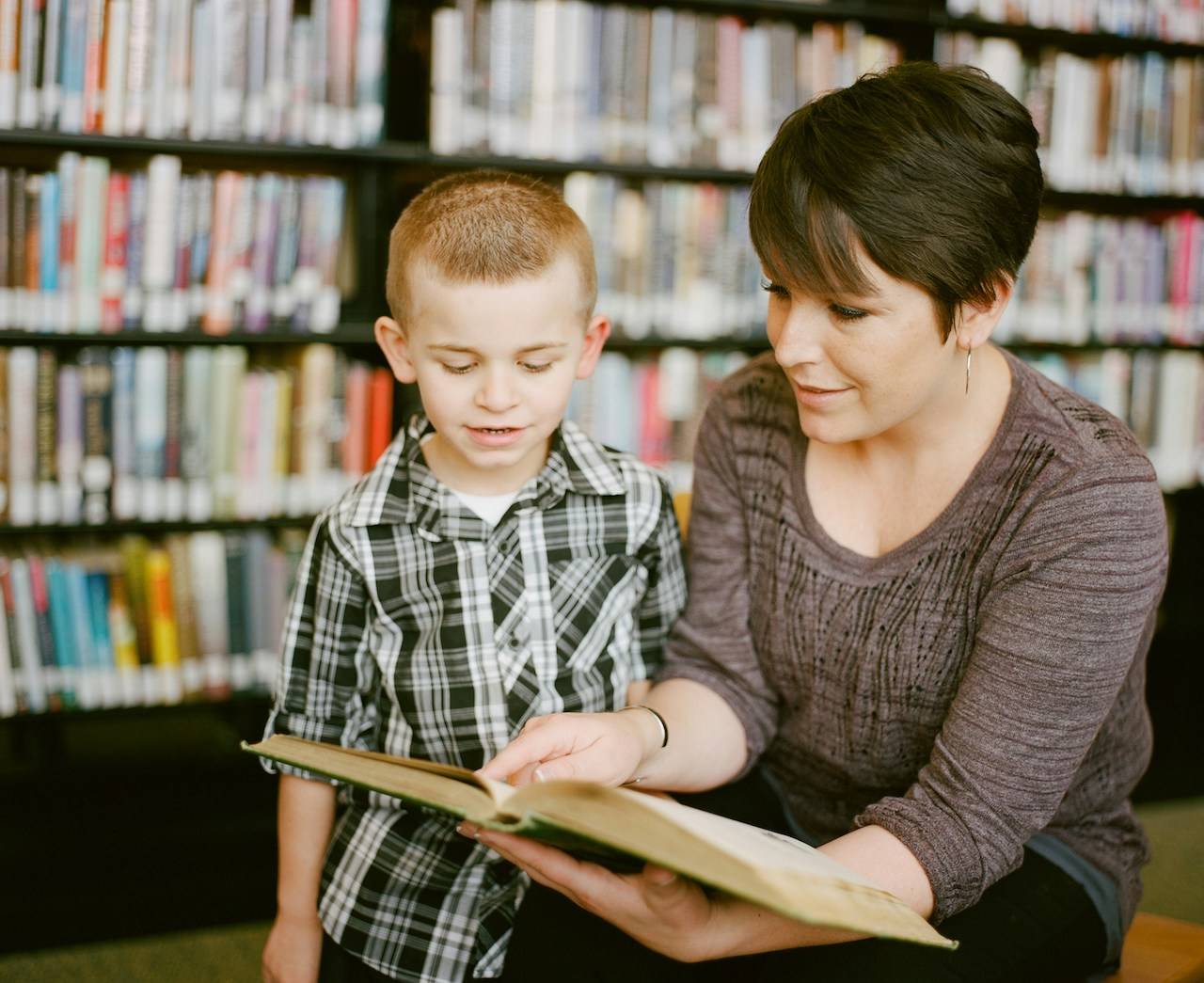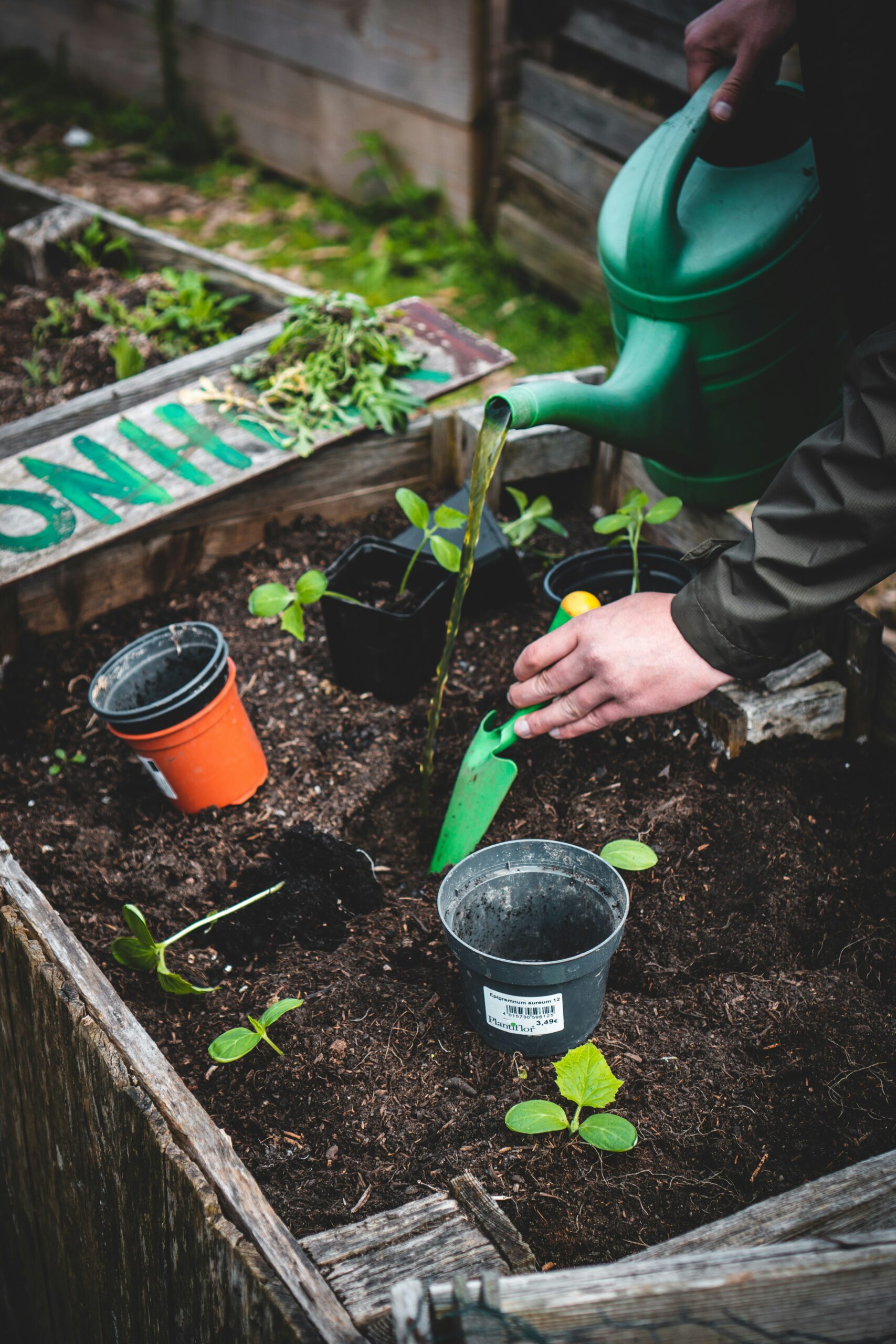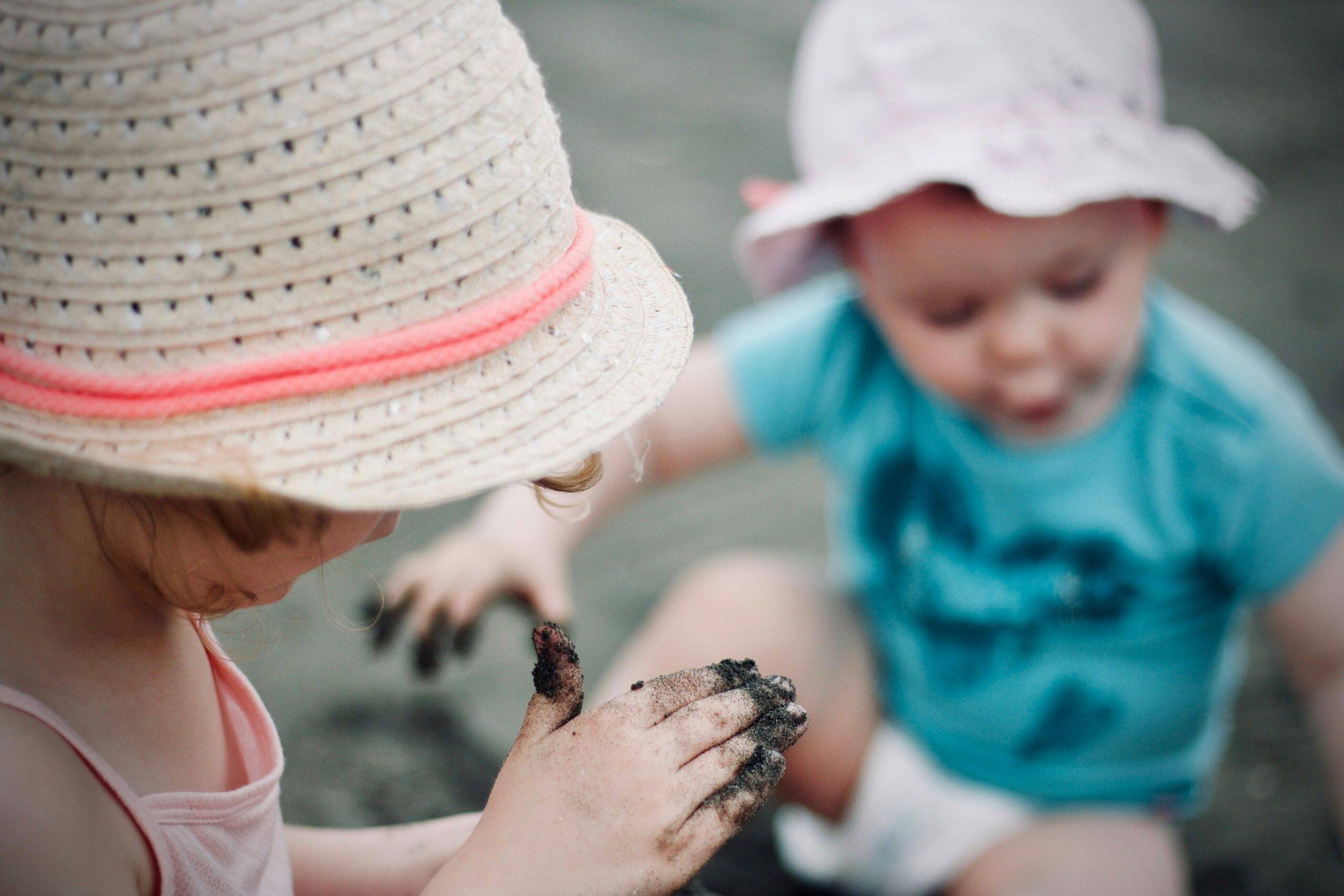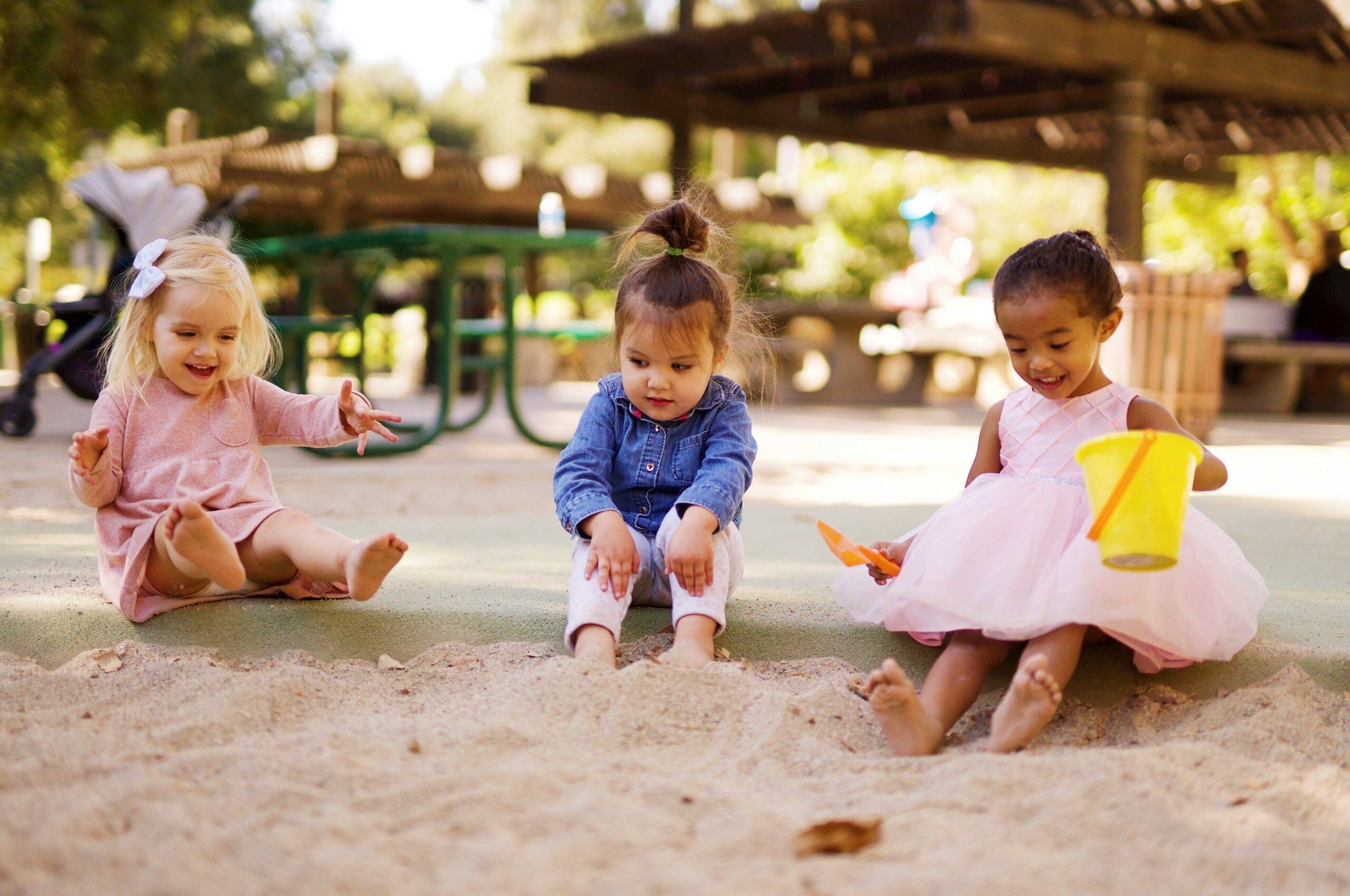Some of the links below may be affiliate links. This means that, at zero cost to you, I will earn an affiliate commission if you click through the link and finalise a purchase. All product recommendations are products that I have used and loved, or products that I would recommend based on experience.
The benefits of loose parts play are that it encourages creativity, collaboration, problem solving, language and vocabulary development and supports the overall learning and development of children.
Another benefit of loose parts play is that it costs just about nothing, so there really are no budgetary constraints when it comes to providing children with this type of play and learning experience.
Just about anything can be a loose part. Both natural and man-made objects count as loose parts. Empty boxes, string, pebbles, packaging, pieces of wood, tyres, cork tops, empty containers, fabric, the list is endless.
The beauty of loose parts is that they are open ended, and that is why they are so powerful for developing creativity, problem solving and giving children agency over their own creative development and play.
In this post and podcast interview, the founder of Play More, Ash Sharp talks about the benefits of loose parts play and quotes Simon Nicholson, an architect who in 1972 who developed the theory of loose parts.
The Theory of Loose Parts by Simon Nicholson
‘In any environment, both the degree of inventiveness and creativity, and the possibility of discovery, are directly proportional to the number and kind of variables in it.’
As an architect Nicholson was referring to school and playground design and rethinking the static play equipment, proposing instead one incorporating loose materials that children can engage with sparking their natural curiosity and inventiveness.
Nicholson went on to say:
“Creativity is for the gifted few: the rest of us are compelled to live in environments constructed by the gifted few, listen to the gifted few’s music, use gifted few’s inventions and art, and read the poems, fantasies and plays by the gifted few. This is what our education and culture conditions us to believe, and this is a culturally induced and perpetuated lie.” (The Theory of Loose Parts: An important principle for design methodology, 1972)
This powerful statement (credit to Lyons Early Childhood School where I discovered Nicholson’s statement) is certainly something that every educator, school leader and playground designer should be seriously considering before spending money on static toys and equipment that robs children of the opportunity to create for themselves.

Blooming Curious Podcast Transcript – all about loose parts
Here is the transcript of my interview with Ash Sharp of Play More. If any of this resonates with you, please share it with others so they can benefit too.
Edwina: Hello and welcome to Blooming Curious, a podcast that’s all about nurturing that natural curiosity in our early years’ kids and students. I’m Edwina, your host from the Ed’s Lessons blog.
A passionate advocate for play and inquiry, and on a mission to keep children curious and questioning. The days of talk and chalk are over. We’re diving into the world of integrated, inquiry and nature-based learning, and exploring the strategies that create lifelong learners. So, if you’re a classroom or home-school educator, or even a curious parent, then this is the place for you.
Right. Welcome everybody. Today, we’re having our very first guest appearance on Blooming Curious. We welcome Ashleigh Sharp or Miss. Sharp, as she’s been known. Ash is an early childhood educator, play ambassador and founder of Play More, a newly established business based in Geraldton here in Western Australia, focusing on the importance of play in child development. Ash has work as a classroom teacher on and off for the past decade. And last year decided to turn her passion for play based learning into Play More. In addition, Ash is a wife and a mom to a gorgeous five-year-old son with whom every day is an opportunity to discover and grow and play.
So welcome Ash. It’s great to have you on the show today. To kick things off for those listeners who might not be familiar, could you give them an explanation of what exactly loose parts are and why you believe that loose parts are so crucial to child development and creativity?
Ash: Yeah, I’d love to. And thanks for having me. I’m very honoured to be your first guest. Yeah, I guess loose parts, the theory of loose parts when we think about it is, you know, bits of things kids play with. But actually, there’s a theory of loose parts, and it goes back to the 70s where it was in an article by a landscape architect called Simon Nicholson, and he devised a theory of loose parts.
So, I’ll read the theory and then I can discuss it. He says in any environment, both the degree of inventiveness and creativity and the possibility of discovery are directly proportional to the number and kind of variables in it. So, variables, I guess, variables are all the bits and the things.
So, natural materials, building materials, scrap materials, things that can be moved, carried, combined, redesigned, put back together in multiple different ways. It’s child controlled, like the children are in control of their environment. They empower creativity and allow children to have a say of their environment.
Basically, similar to that, how not to cheat children. Children live in a world created by the gifted few. Environments created by others robs them of the opportunity to create themselves. So, when they’re in an environment with these loose parts or variables, they are empowered to create their own environments.
I’m not sure if that makes sense, it makes sense to me. But yeah, it can be a wild concept, I guess, because you know, we kind of live in a static world where everything’s set up for us. How much agency do we really have over our environment? So yeah, putting a few things out and a variety of things and then stepping back, I think gives children the opportunity to create their environment with these parts. It’s a very, it’s a very broad topic.
Edwina: You know, I just actually had a thought this morning when I was thinking about this recording and having you on. I was thinking, you know, when I was a kid, which I mean, I was born in the 60s.
So really my early childhood was late 60s, early 70s. We played with loose parts. Unbeknown to us that they were loose parts, you know, I remember, for example the back of my grandparents’ house was just this empty land. And for some reason there was this discarded bit of kitchen cabinetry.
And as kids, we would just find odds and sods, you know, empty tin cans and bottles and all sorts of things, fill them up and we’d pretend and play shop, you know? And so those were the loose parts. You know, the, all those things that we used to create and have fun with, they weren’t boring things. They were actually loose parts.
So, in a way it’s like we’re going back to the future. Those were the days before plastic fantastic, you know.
Ash, could you share a journey how you incorporated loose parts in your classroom? Cause I think for a lot of educators, you know, everything now, or for a lot of them, everything’s so organized, you know, educators are so rushed with the timetable and fitting stuff in.
What about your experience? How did you incorporate loose parts into your Teaching? So I think that might help a lot of teachers to see, well, it is possible. They can actually do this in an education setting. And obviously for parents, it’s something that can easily be done if you’re a home schooler, for example, or just as a mom at home with your kids.
It’s almost become second nature, I think. But for teachers, I think sometimes they worry so much about everything they have to cover that sometimes we lose sight of the really important things, even though we know they’re important, that sometimes we lose sight of how to do those things that really matter.
How did you incorporate them into your classroom?
Ash: Great question. I feel like I really started to understand more of the loose parts theory and mindset towards the end of my time in the classroom. And it was something I really wish I could have explored more, but it was about creating environments that I feel that the children could feel empowered to create.
So, creating an environment that gave them agency that they felt free to create within. So that involved, I guess, putting out things that were, you know, open ended in terms of the blocks and the toys, but I think it’s also about the environment you create with your presence and words. They’re, also loose parts in a sense. We’re variables in the environment like, Nicholson refers to.
So, for me, that was also a language, an environment created with my language that I would use with the children, and the other adults. I think that’s so important. Language is something that we all use, but we don’t realize, I think the impact it has, sometimes we talk too much and we interfere too much.
So, just sometimes it’s about letting go and not controlling the environment so much, giving the kids that freedom. Also, giving kids the choice and the time to create. I think school structure is so scheduled. Like you said, sometimes it might take up to an hour for true play to come through.
And that can be hard when you’ve got to get on the mat for your literacy session. But I think the kids really need that time within the environment. And that’s also, whether it’s indoors or outdoors. The outdoors, obviously is more ideal for larger play, it offers more opportunities. But yeah, just stepping back, observing, creating that environment with your language, and providing materials that allow kids to think, not scripted.
Like the blocks, like the, sticks, rocks, but also materials like tyres, and probably things considered dangerous. You might want to say, people often go to dangerous things, but risky play has its own benefits as well, which is a whole other talk.
Edwina: Risk is so important, isn’t it? There has to be an element of risk for children. I mean, I remember hearing a talk not long ago saying that because we’re taking away risky play from children, it might be one of the reasons why later in life, so many kids take massive risks that can actually end their life, unfortunately, because they haven’t had that exposure to tiny little risks throughout their childhood.
Ash: Oh yeah, I’ve heard that too.
Edwina: And it’s a funny thing that you’re saying, a lot of teachers actually just having to step back and let go. And it’s the same thing for inquiry-based learning, you know, it’s having that courage to just let go and, and let’s see what the kids can do.
And those loose parts are essentially provocations. Provocations for creating, for thinking, for problem solving, and essentially that’s what education is and should be, isn’t that right?
Ash: Definitely. The benefits of the loose parts mindset is very important for life. Learning for life really.
Edwina: And Ash, what was that moment when you realised in your personal experience the impact that loose parts had on children? Can you recall a moment when you realised this is really the way it should be. This is the way I need to go with these kids.
Ash: That’s a good question. I was reflecting on my time in the system.
I would say maybe a couple of years into my teaching, I think it was 2016. It had been raining, and we were inside and the kids were fascinated. I mean, I was kindergarten teacher. So, the 3- to 5-year-olds, and it was raining. So, of course, the kids were really excited by that. And we were inside.
They wanted to go outside and I was like, yeah let’s just go outside. So, we went outside and I think there were still some things left out from lunch, the buckets and spades and they were just getting buckets and they were filling up a bucket with some water that was dripping from a pipe and they were just so excited and happy and…it just… reflecting back on that moment, it was a real turning point for me as an educator. I guess, because how many people would look on and say, well, they should be inside. They can’t go out and get wet. Their shoes were off! I was so controlled by rules!
I think just letting go and stepping back and letting them be in that moment. It was so pivotal for me, and I just feel like I learned so much from them, and that we do, if we really allow it, we can learn so much from kids. And that’s what I guess, turned my role into being a mentor and a guide, more of a coach.
I wanted to be a coach and learn alongside the kids. And not seeing myself above the children, I guess seeing us as equals in a way that we can learn and grow together from each other. I’m not in charge. That was a moment that really changed for me as an educator.
Edwina: I think that’s very touching. And as you were saying that, I myself was reflecting on moments and I really felt your passion. As you were saying that, I think many teachers can recall those incidents where if you just stop and have a look, kids are learning so much and then it’s, it’s just stopping yourself, not interfering, not worrying about the timetable, not worrying about the next thing that you’re supposed to be doing.
Because in those teachable moments, I think that’s where the real authentic learning can take place, if we just let it. You know, it’s pretty powerful stuff. Loose parts are provocations really. They’re a game changer in any setting. I’m curious to know what challenges you may have faced with loose parts when things perhaps didn’t go as planned.
Can you share with us how you navigated those moments?
Ash: I think the biggest challenge is people approaching them and not knowing what it is. Through my business now, I do pop up play sessions, with loose parts. So, I bring a whole heap of just random bits and I put them in a location, and then it’s sort of a free for all space for people walking past to interact with.
So, that opens it up to mixed ages from, you know, babies up until even adults. But a lot of the people sort of just look at it and say to me, what am I meant to do with this? And I think that really goes to show. That we don’t really understand the idea of that open ended play. So, I guess my role there is to say, and I always say, it’s for your ideas.
And it’s like, whoa, hold the phone. And that goes back to that notion of the gifted few. We are all gifted if we allow ourselves to be creative and the loose parts are a vehicle for us to be creative, and sometimes it takes a while for the kids or the adults to get into it. They sort of hold back, they look at other people, but then they might pick something up and just say it’s a formula can.
Really good loose part by the way. They can take the lid off. They can put something inside. They can roll it. They can stack it. They can use it as a drum. Suddenly it has all these other uses and it used to hold some powder, but now they can see it has all these other options. Let’s add a pipe. We could put a pipe in it.
We could stack a pipe on top. One of my favourite things is stacking them like ten pin bowling, and then using like some kind of, I think a buoy, we have like a foam buoy and they roll it and play bowling. I think it takes time. It might not be straight away that people know what to do, but like I said, if you stand back and give the time. I think the best thing I can give is provide the space and then step back and provide appropriate support in terms of the language that I use, and then hopefully model that to, other adults. Rather than, it’s easy for an adult to bring their ideas into something, but then that robs the opportunity for the child to discover it for themselves.
So, you should do this, you should do that, don’t do this, don’t do that. That’s creating that language, that environment where they feel restricted to create. And we want children to harness their creativity because we’re all born creative. I do have to mention a study that I was reading about creativeness.
It was back in the early nineties. So, a while ago now, but I feel like it would still be relevant. NASA, they do a creative thinking test with their employees and they decided to do it on four and five year old’s to see how creative they were, and 98 percent of children age four to five tested as creative geniuses in their tests.
And then they decided to test the same kids as they got older. And then at 10 years old it was 30 percent creative genius and then at 15 years was 12 percent and then as adults, do you want to guess?
Edwina: Two percent or something around there.
Ash: Less than 2%. So, I guess what does that show? We’re sort of educated out of our creative capabilities.
Edwina: In the previous few episodes of this podcast, I’ve been focusing on just the things that we do as educators, either as home-school educators or classroom educators just to get started in the beginning of the year. And so, the last two posts have been about the environment or the third teacher, both indoors and outdoors.
And I’ve been mentioning about loose parts and different strategies to get loose parts out and what some other educators have done. And you know, that whole aspect of being creative and thinking for yourself, that is so essential in our environment to provide those elements for children to create without our interference.
We almost school creativity out of children. And I know the late great Ken Robinson spoke a lot about that.
Ash: Yes, I’ve got my notes in front of me with his quote highlighted. It’s amazing.
Edwina: That’s always in the back of my head. You know, Ken Robinson saying schools kill creativity. And I know when I’m standing in a classroom, I’ve always got Ken Robinson’s voice in my head thinking, crikey, I must make sure not to kill kids’ creativity.
And I think, for myself, he’s been such a mentor and such a massive influence and remembering to give kids that agency. And so, the last few blog posts and podcasts have been about that. So, anybody who’s listening to this today might be a good idea to also go back and just see that. Cause I think Ash your, and my ideas really sort of dovetail and think it’s just something that parents and teachers really have to listen to and, and heed because it’s almost like a warning, right?
Because even people at Google with all their technology, I’ve read lots of things where they don’t even allow their kids to be on technology and they are in the technological world because they understand how it can stifle creativity and where then they themselves don’t spend all the time just on technology.
They take some time out in order to be creative. So, I think that’s really important for our children.
So, Ash, we’ve spoken a lot about creativity, but what about academic development? I think a lot of people would say, Oh yeah, but that’s all great, but it’s all about academics.
What are your thoughts on how loose parts impact academic performance?
Ash: Oh, that’s a great one. Well, I like to go back to the notion of play and learning through play. We’re born hardwired to play. We have amazing brain capacity, and play aids our developments, our holistic development. So that includes, you know, physical, emotional, social, cognitive, and language.
So, you know, when we’re playing with loose parts, we’re thinking, we might, be interacting with other children, we’re resolving conflicts and talking to one another, or maybe just thinking about ideas in our head, but all these things are building blocks for academics are they not? Your, you know, spatial recognition, you’re stacking and seeing shapes around you and counting and sorting and organizing, and I just find academics are embedded and integrated into the everyday.
Yeah, it’s, it’s just part of life.
Edwina: Oh, totally! I don’t think you can separate the two. I think the one feeds off the other, right? Because if a kid’s not happy and they haven’t got agency, they’re not going to learn. We know that. So, the two go hand in hand and you can’t separate them in my mind anyway.
Ash: You’re more likely to remember things that are more meaningful and relevant to use. So, when you’re in a space where you feel free to think and create on your own terms, you’re more likely to embed that into your brain. Your neural connections are stronger.
Edwina: I couldn’t agree more with that. As an educator in education, there’s often this very focus on the structured learning.
How do you balance loose parts? How do you bring them in, to balance that structured environment?
Ash: I think, honestly, it all goes just back to trusting kids. I really feel that we need to trust children more. I guess these days it might be hard in classroom settings. You’ve got to prove learning, don’t you? You’ve got to report on it and document it and parents want to see what their children are learning. I think the only real people who know what learning is going on sometimes, are the children. They’re the curriculum. Anyway, that’s another topic. I get easily distracted because I just feel very passionate about this.
Edwina: How could they actually bring loose parts into their settings? A lot of the times it’s always, there’s always that big word, right? We haven’t got the budget! But really, loose parts doesn’t need a budget, right? Does it?
Ash: My collection of loose parts has pretty much been donated, given to me, or picked up from the side of the road, or the tip shop for a very minimal price.
Loose parts are great to reinforce sustainable practices, so kids can see how things can be used for a different purpose, you’re more resourceful, you don’t need a lot of money. Kids don’t need all the fancy stuff, really. And what’s that, saying about, you get them the toy, they just want the box.
That’s why my logo is a box.
Edwina: It’s just about having a little bit of imagination, isn’t it? The same way as we’re getting our kids to be curious and creative and have an imagination. I think as the adults, we need to find our creativity and our imagination and start thinking about not, oh, I can’t do this, but how can I do this?
Ash: Watch the kids, you’ll learn.
Edwina: Exactly! So, instead of thinking, oh, I haven’t got the budget, it’s rather, how can I get hold of this stuff? Get the kids to bring it. And my big thing is just it’s a whole community effort.
Ash: It involves the parents as well, involves the community. You know, we’re looking for this, or what can you bring, or, you know, grandparents can come and help build something.
I find you don’t need fancy things. And I think having the kids. involved in the process of creating their environment is so important. So, get them to bring things from home, get them to put things in the classroom. They’ll feel so empowered. Like we helped build this space. Isn’t that what we want? It’s to feel validated and that, and that’s how you, you build the community as well, right?
Edwina: You build the community and that’s the agency. As you said, they feel part of it. As a teacher and as a mom, and now with your business, you must have seen some incredible transformations in children when it’s come to loose parts.
Could you sort of share a specific success story that stands out to you? Where you really witnessed a child, their remarkable development or a breakthrough moment that you attributed to loose parts in their learning journey?
Ash: Well, it’s hard not to look past my own little guy, Milo, who’s five. I think part of my journey as an educator has come to be because of him.
When I was teaching, you sort of get the kids, already at four, five, maybe three. They’ve done so much learning before that point, so much critical learning. So, seeing it right from the beginning as a newborn, is a real amazing experience to witness and be part of their learning. Milo is a very curious little guy.
We like to provide a stimulating environment for him, real-life, real-world experiences. And I can’t think of a better example than renovating our home, which we have been doing for the last two and a half years. So, our environment is literally a lot of loose parts, many variables in one place. And he has grown up playing with many loose parts.
Edwina: And real loose parts, we might add. Real hammers, real saws, real nails. And he’s still okay, right?
Ash: Oh yeah. He’s learning. He’s learned through all those experiences and he’s been immersed in it. And just the days spent, you know, playing with all the parts. While we’ve been off building, he’s really developed that, uh, self-initiated mindset because of the stuff there.
I want to explore it. This could be a tower. It could be a house. Let’s go and bring something from over there to this. He used to love rubbish trucks and bins. He went through the phase of bins. So, everything was a bin. He would line them all up and tip them. They weren’t always boxes. They were like cups or we’d go to Bunnings and he’d get all the pipes in the pipe aisle when we were going to get things for plumbing and he would line all the pipes up and drains and play bin day with that.
So, there’s a loose part mindset he’s learning through. We’re learning so much about us as parents through him exploring the world and the loose parts and the environment has been a big learning curve for both myself and husband Ruben.
Definitely fostering his imagination as well through loose parts. I mean, it kind of gives you an excuse to just leave stuff out, to be honest, doesn’t it? Be messy. Our backyard is still a lot of remnants from building, scrap wood, and him and Ruben built a playground with some off cut Jarrah, with Milo’s help, designing it.
So, he was part of that design process. You know, we’ve got some old tyres out there that we found in the sump. It’s just an ongoing play space for him to build upon, like a big loose part, all the loose parts together, and daily that is an inspiration to us. As how you can view the world and create your own world and have that mindset.
I can’t think of a better example than my own children, but you see it with all children. I see it in that five- or 10-minute block. They come to a play session and interact with the loose parts. They just have that spark there that – I want to explore this, I want to see what I can do with this. It’s really inspiring and I love seeing that.
And just go with it.
Edwina: And Ash, you love your time so much with Milo that you started the business Play More in Geraldton and that’s become your full-time occupation now, but so much so, that you now home-school Milo. So, how’s that all going? And I think for many of the listeners out there, I think so many people would say, that’s all great, we’re letting kids play, but what are they actually learning? Well, we know what they’re learning, but on the academic side, for those who are thinking about reading and writing and math, how do you, in your home-school setting, integrate all that kind of stuff into Milo’s curiosity and his exploration?
Because it’s not an and or situation, is it? It dovetails, and how did you manage that?
Ash: The decision to home-school was difficult at the time because he was at school, the school I was working at, but it just became apparent that there was a misalignment in values and I really, truly wanted to keep learning alongside him and in a way it became an easy decision.
And just the time together is so much more potent. We can choose how we spend our days. It’s just like learning through life experiences. And like you said, learning is integrated and he’s the curriculum. We don’t subscribe to a curriculum or get out the curriculum and tick the boxes. We observe and help create the space based on what he’s interested in or step back.
And again, like I said before about stepping back, observing, and then adjusting accordingly. So right now, he is right into aviation. He has been for probably about a year since we got back from Japan. Airplanes, airports, and that has just been evolving throughout the year and built upon and you can nit-pick all the curriculum areas out of that, because that is a very broad topic.
So, there’s the math involved in the altitudes and the air speeds, wind directions. He loves watching, air crash investigations that TV show documentary, and he watches it and he studies it and he brings that into his play. He spends a lot of his day playing with airplanes.
I’m sitting at the kitchen desk now, table, which is, which was, an airport, which I had to ask if I could borrow for putting my computer on. I’ve got airplanes all around me. Anyway, so yes, airports and, building upon that. Physics through the, the lift, stall, spin, ailerons, all this jargon with the language of airplanes and you know, you’re covering meteorology with wind speeds and directions, weather conditions.
He’s right into checking my phone every day for the weather. The temperature today, the maximum, the minimum, today is going to be really hot so I need to put sunscreen on. I need a hat. So, all those rich conversations around daily life. Yes, reading and writing and math is the big one, right? He loves math naturally.
That has come through his love of AFL and football which has been a bit quiet lately cause it’s off season, but he’s getting right into that. He would play football every day. Being both teams, and adding up the score for both teams, working out the difference. He’s base level is pretty much six, counting in sixes, so there’s your times tables.
And reading comes up naturally through the everyday. Not only the vocabulary through what he’s hearing around him and bringing that into his play. We write the shopping list together, if he wants to find something to watch we sound it out in the little box on the YouTube search.
So that naturally occurring reading and writing, we read obviously every night and point and sound out words, but it’s not imposed upon him. It is naturally occurring. And I think that is best for him to learn in real world. That’s more natural, which makes sense. It really just makes sense.
The longer I’m out of the system, the more this approach just seems like it should be for everyone.
Edwina: You know, I always think back to my own childhood. I was raised, born and raised and schooled in South Africa. I don’t know whether it’s changed, might’ve changed by now, but certainly when I went to school, my first year of formal schooling was when I was six and I turned seven in that August. So, this whole rush of getting kids to school when they’re three, four and five, I just don’t get it. I don’t think that disadvantaged me. I don’t think that I’m behind anybody else who perhaps went to school when they were three.
Ash: You wouldn’t know now, would you?
Edwina: What does it matter now that I’m this age, whether I went to school at three or seven? And certainly, I think because I was that bit older cause that’s just how it worked, you went to school the year you turned seven.
I think, because my birthday was after July. That’s why I turned seven. This whole rush about getting kids to school and have to start reading and learning and all the rest of it. I don’t see the point actually. I think the older you are, the more ready you are, the better it is.
There’s no need for the rush. And that’s just my personal opinion.
Ash: Oh, I agree.
Edwina: And when my own children started school. I remember we were, expats internationally and the one school I visited and my child wasn’t even four yet, I asked, well, what do you expect them to do? And it was, oh, they have to read, write, do the name.
And I just turned around and I said, thanks very much. And when they offered him a position, the best thing was when I said, no thank you. We won’t be taking that. It felt so good. Anyway, we digress from loose parts. It’s just, everything’s a loose part, right?
Ash: Exactly, it’s all interconnected.
Edwina: Ash, just to close off, let’s tell everybody a little bit about your business, Play More, and for those who are lucky enough to live in Geraldton, how they can get hold of you, how can they join in with your play sessions. Just tell everybody how they can find you and connect with you and come and play with you.
Ash: Oh, thank you, well, Play More is evolving. It started last year where I’d finished at school, but I still wanted to work with families and children, and promote learning through play. So, I started doing some messy play sessions in town, that were open for everybody to come to and that was quite well received, because a lot of people don’t like to get messy or clean up and I don’t mind either of those things.
The kids really loved it as well. And the parents, I think see the value in that. I just built upon that, also gathering loose parts and doing a few play sessions here and there, but I think it’s growing and evolving and that we, it’s not just me running the business, my husband Ruben is helping as well.
We’re working together and we want to create a community of like-minded people who believe in learning through play. And right now, at the moment that I guess is play sessions, but we are hoping to create something bigger than that. And I guess stay tuned because right now we don’t know what it looks like, but it’s in the process of becoming something bigger, but for now you can follow Play More on Facebook, which is just Play More, the word, a colourful box is the picture, and we’re on Instagram as Play More @Playmore.
We’ve got a website, but that is still being developed, so there isn’t a whole lot on it right now, but that is just playmore.au. You can contact me through those.
Edwina: Well, Ash, we will put all your contact details in the show notes for anyone who’s interested. So, I think for today Ash, thanks for sharing the amazing benefits of play and loose parts with us.
And I really hope that everything goes well for you and your business. And I look forward to connecting with you again and seeing your growth as I watch you on social media. I just like to thank everybody for listening today. As I said, Ash’s details will be in the show notes and make sure you check that out.
And if you liked the show, please consider sharing it with others, following and leaving a review. That way more people find us because that’s just the way the algorithm works. So, thanks so much, and as always, I like to end off by just saying…just stay blooming curious!
Do you have a question you would like me to address in future episodes? Then leave a voice message below.
